
Anisotoma geminata (Horn)

|
|
Anisotoma geminata (Horn) |
Beetles of the genus Anisotoma are members of the Leiodidae (round fungus beetles). They along with the genera Agathidium and the single species of Stetholiodes make up the tribe Agathidiini Westwood, 1838.
The definitive recent work on this genus is Wheeler (1979). Like Agathidium all the members of Anisotoma are found on slime moulds (Myxomycetes) including the following genera: Comatrichia, Fuligo, Vycogola, Metatrichia, Stemonitis, Trichia, and Tubifera. Individual species of Anisotoma are commonly associated with more than one slime mold host and it is not uncommon to find more than one species of Anisotoma on a single sporangial growth. Both adults and larvae feed on these slime moulds. Adults probably use chemoreceptors in antennomeres 7, 9, & 10 for slime mould detection. These antennomeres contain internal vesicles which are characteristic of the Leiodidae (Wheeler 1979).
Careful cladistic analysis by Wheeler (1979) has shown that Anisotoma, which contains 48 described species, is divided into six monophyletic species groups. These groups are:
In Atlantic Canada there are representatives of all of these evolutionary species groups and subgroups except for the A. scopula subgroup. The species recorded include A. errans, A. horni, A. blanchardi, A. geminata, A. basalis, A. discolor, and A. inops.
It appears that speciation in this genus occurs relatively rapidly, between 10,000 and 1,000,000 years. The genus appears to have arisen in North America from a hypothetical common ancestor of Anisotoma and Agathidium, subsequently spreading into the Palearctic and Central American regions.
Key to Atlantic Canadian species of Anisotoma (Adapted from Wheeler (1979).
Elytra with eight complete punctate interneurs (interspaces); interneur 9 confluent with lateral channel. - 4
Elytra without nine complete punctate interneurs (interspaces). - A. errans Brown
Pronotum nearly impunctate; female tarsi 4-4-4. - A. blanchardi (Horn)
Elytra with punctate interneur (interspace) 9 confluent with lateral channel near middle, much beyond humeral angle. - 5
Elytra concolorous, immaculate. - 6
Elytral intervals punctate and/or colour black. - A. inops Brown
Below are photographs of six of the seven species found in Atlantic Canada (photographs of A. errans are not yet available).
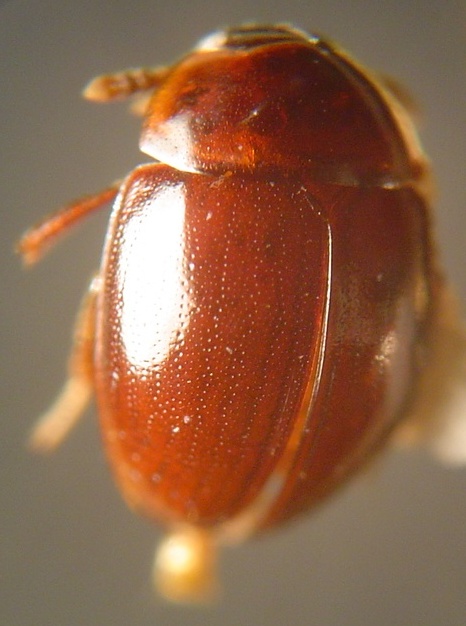
|
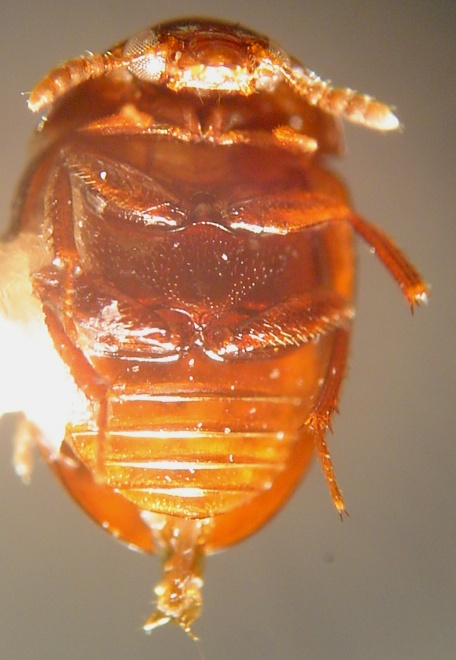
|
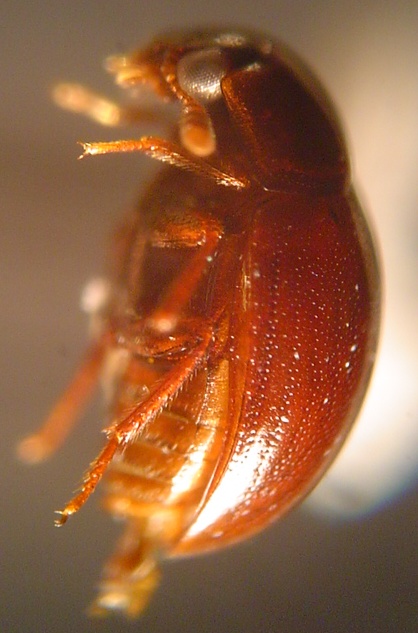
|
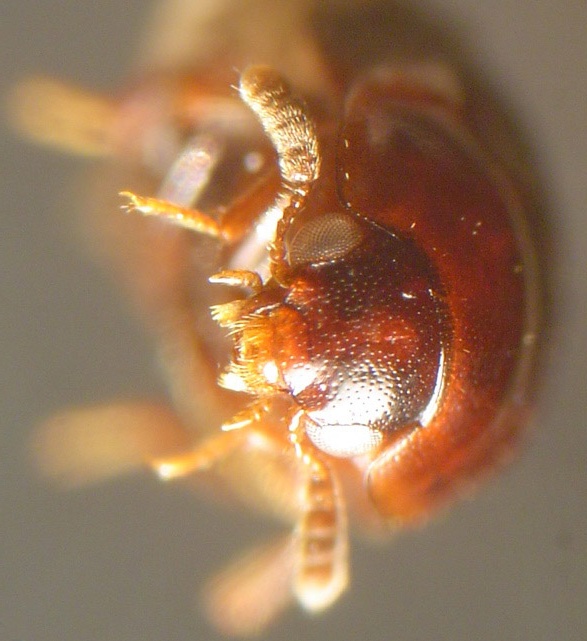
|
|
Anisotoma horni |
Anisotoma horni |
Anisotoma horni |
Anisotoma horni |
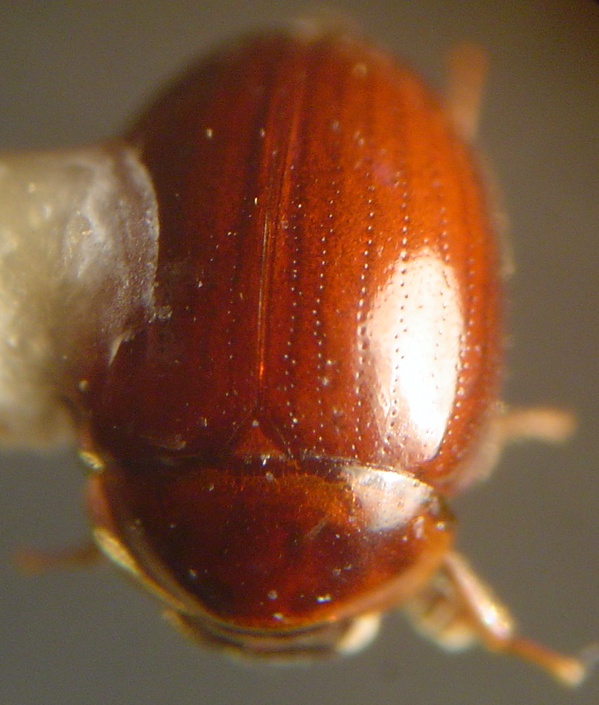
|
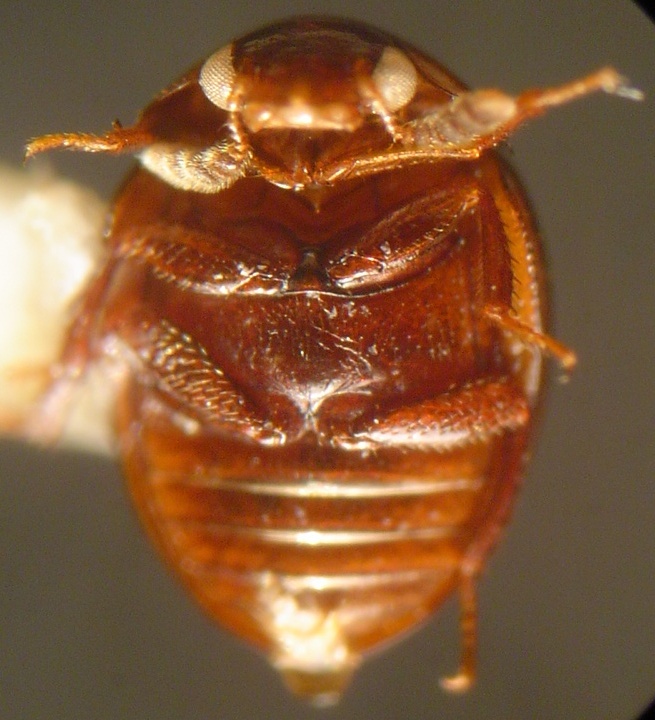
|
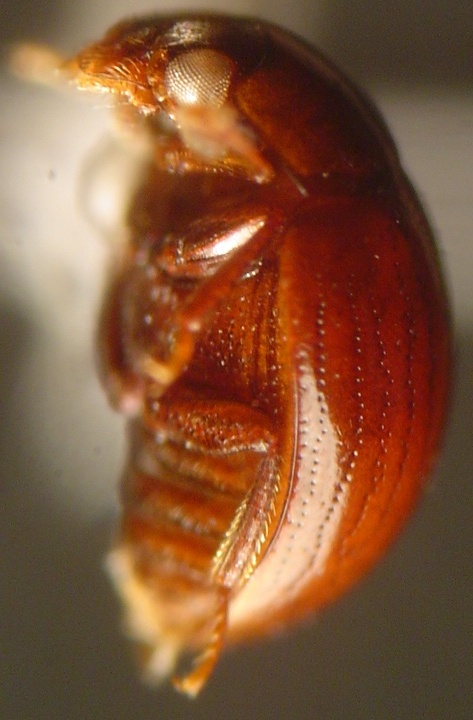
|
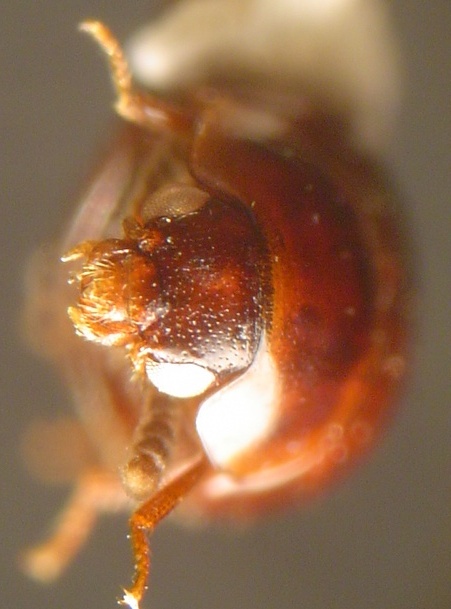
|
|
Anisotoma blanchardi |
Anisotoma blanchardi |
Anisotoma blanchardi |
Anisotoma blanchardi |
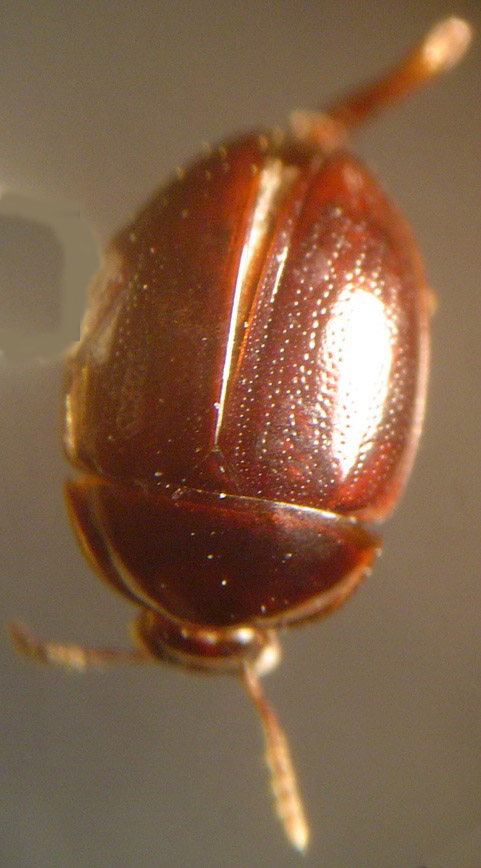
|
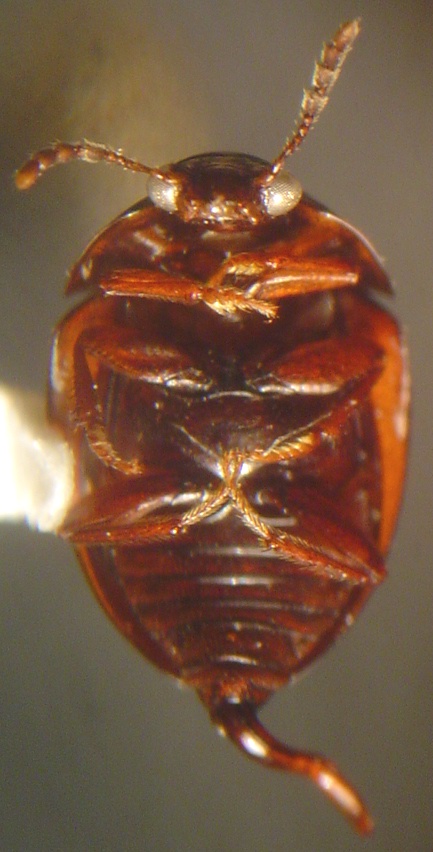
|

|
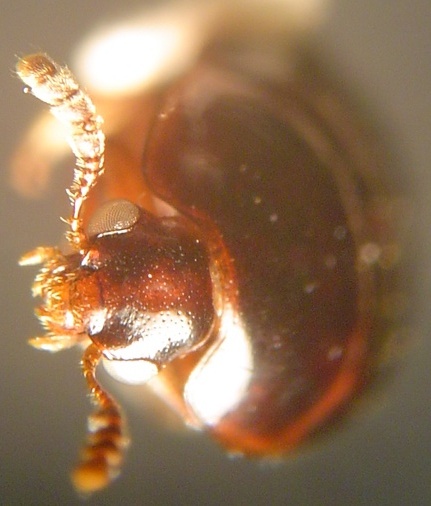
|
|
Anisotoma geminata |
Anisotoma geminata |
Anisotoma geminata |
Anisotoma geminata |
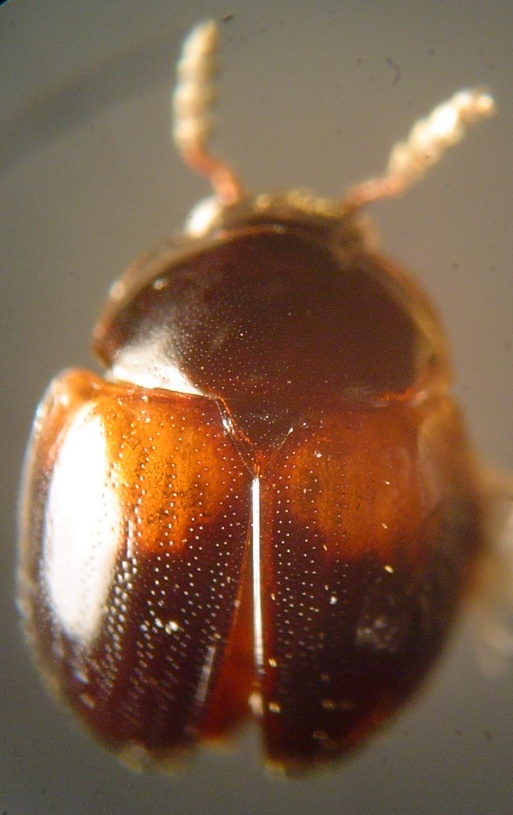
|

|

|
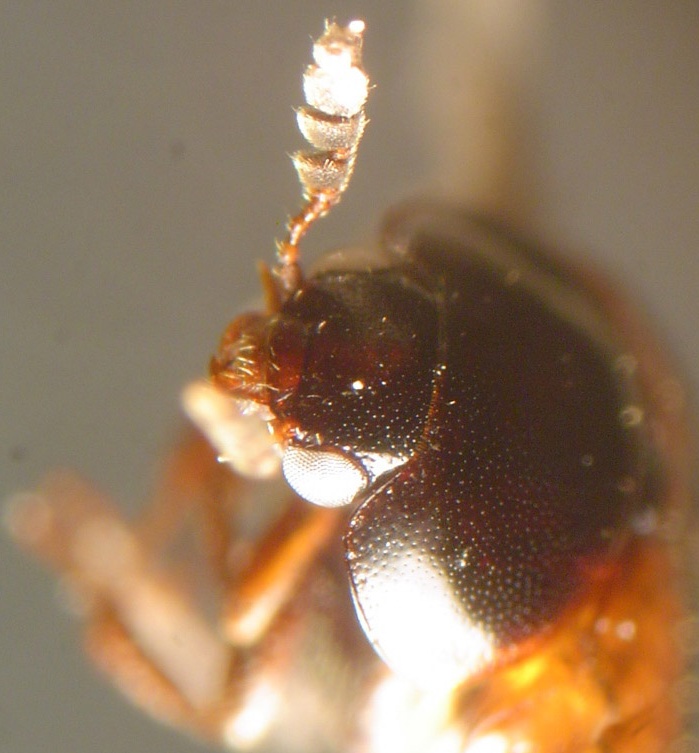
|
|
Anisotoma basalis |
Anisotoma basalis |
Anisotoma basalis |
Anisotoma basalis |
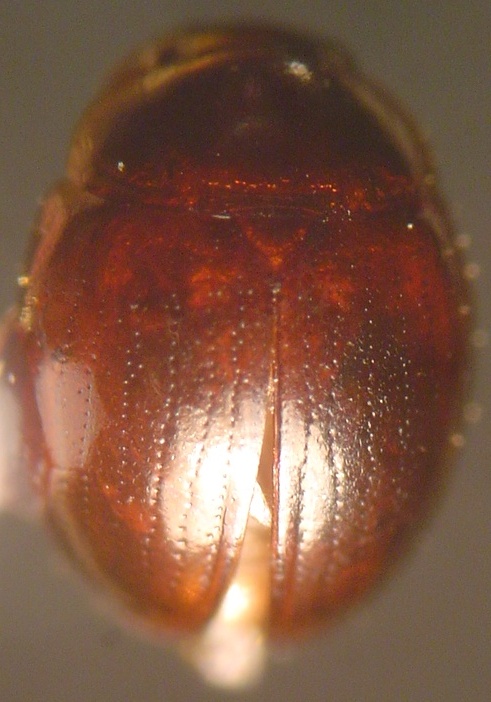
|

|

|
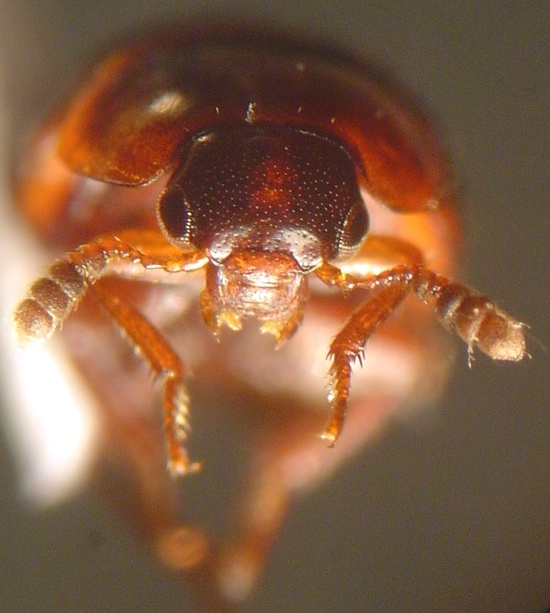
|
|
Anisotoma discolor |
Anisotoma discolor |
Anisotoma discolor |
Anisotoma discolor |
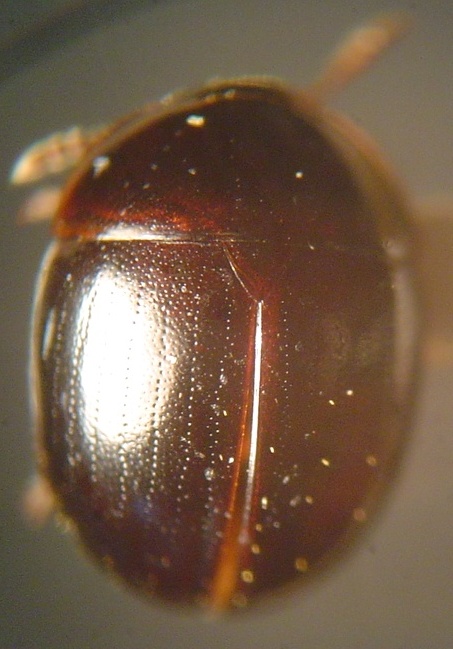
|
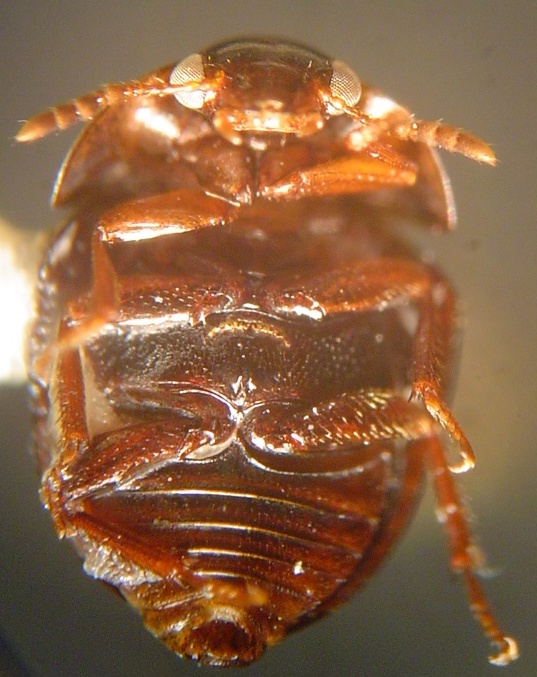
|

|

|
|
Anisotoma inops |
Anisotoma inops |
Anisotoma inops |
Anisotoma inops |
References
Peck, S.B. 2002. Leiodidae Fleming, 1821. In: Arnett, R.H., Jr. and M.C. Thomas [Eds]. 2001. American Beetles, Volume 1: Archostemata, Myxophaga, Adephaga, Polyphaga: Staphyliniformia. CRC Press, Boca Raton, USA. pp. 250-258.
Peck, S.B. 1991. Leiodidae: small scavenger beetles In: Bousquet, Y. Checklist of Beetles of Canada and Alaska. Agriculture Canada Publication 1861/E. pp. 77-83.
Wheeler, Q.D. 1979. Slime mold beetles of the genus Anisotoma (Leiodidae): classification and evolution. Systematic Entomology, 4: 251-309.
Many thanks to Quentin D. Wheeler for his assistance with determinations. Also to Joyce Cook (Carleton University), Philana Dollin (Dalhousie University, and DeLancey Bishop (North Mountain Old Forest Society) whose studies of saproxylic beetles have contributed significantly to knowledge of this group in Nova Scotia.
(c) All rights reserved. Christopher Majka & Empty Mirrors Press. Last revised, September 2007.